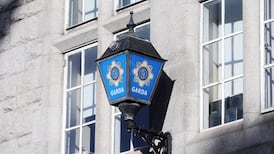The Heritage Council has confirmed that any sale of Westport House before 2017 would require repayment of €2 million in State grants for maintaining the 18th century property.
However, Heritage Council chief executive Michael Starrett has urged a solution which ensures that the Browne family can continue to run the house and estate as a centrepiece of tourism in the western region, given its economic benefits.
“Westport House’s situation is now a Westport problem; it is a national problem relating to State support for historic properties,” Mr Starrett said, adding that Bantry House in Cork and Russborough in Co Wicklow faced a similar situation.
On the market
The Browne family, descended from Grace O’Malley and linked to Westport House for several centuries, have put the historic property on the market as a going tourism concern for €10 million.
The family said the decision was taken “reluctantly”, for legal and financial reasons on advice of High Court-appointed administrators.
Minister of State for Tourism Michael Ring has expressed "surprise" and has accused the family of "playing politics", but reiterated yesterday that talks were "progressing" between Nama and Mayo County Council in relation to buying the loan on the property.
Some 380 acres of the estate had been put up as security on a loan of €6.5 million taken out in 2006 by the late Lord Altamont.
This was acquired by Nama when the recession hit, and formed part of a portfolio due to be sold last year to US investment company Cerberus.
Mr Ring, who is based in Westport, was instrumental in ensuring that the loan was withdrawn shortly before sale, amid serious fears about the impact on tourism if the house and estate were broken up or sold.
Mayo County Council then opened negotiations with Nama on acquiring the loan – amounting to €9 million with interest last year, but valued now at €1 million.
The Heritage Council has paid €2 million to Westport House under its buildings-at-risk grant scheme which supported some 50 properties a year, ranging from vernacular thatched cottages to historic mansions.
This scheme was suspended in 2007, after the council had its budget cut by 65 per cent.
Mr Starrett said there was a precedent for this grant – used largely to replace Westport House’s roof – to be repaid if a property was sold within 10 years.
This had occurred with Ballyfin in Co Laois when it was sold and a grant of about €1 million was repaid, he said.
However, Mr Starrett said the cost of maintaining historic properties required State support.
“This is not about looking after what we might perceive as well-heeled families – this is about maintaining properties that contribute to community and economic development, giving employment,” he said.
“Where would Westport be without Westport House?”








